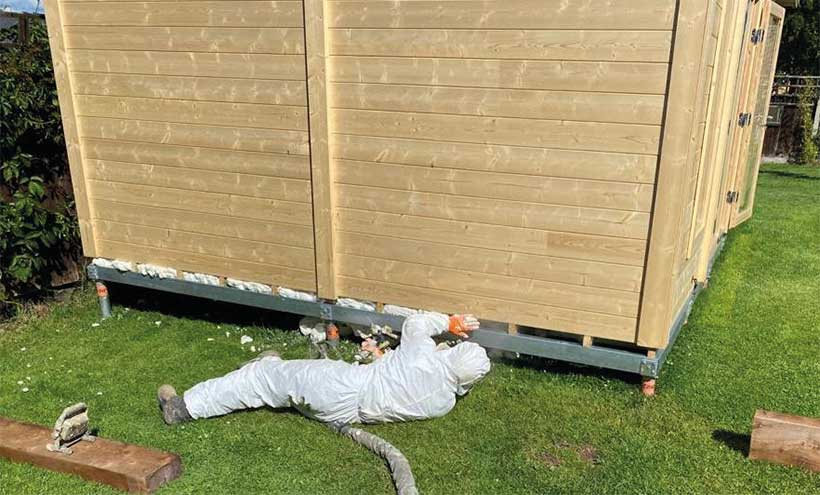How to keep your park home warm this winter with better insulation paid for through the green homes grant.
We may have had one of the hottest summers on record with temperatures creeping up into the high 30s, but winter will soon be with us and keeping our park homes warm through the short days and long nights can be an expensive challenge.
Clearly, better insulation will help keep our homes warm and the Government’s recently launched Green Homes Grant promises park home owners a voucher to spend on energy saving improvements such as underfloor insulation – a potential problem area with some timber floored park homes.
Heat loss
Research shows that over ten per cent of heat is lost though the underfloor area, even more in exposed locations where so many parks are sited. Better underfloor insulation will bring improved comfort levels and lower heating bills especially through the colder months.
That’s all well and good but who can we trust to burrow beneath the park home and do the work properly? One company with years of insulation experience across all sectors including park homes, is Icynene.
Icynene specialises in spray applied insulation and operates nationwide through a network of approved installation contractors.
Icynene insulation is applied using a pressurised gun system. The chemical components come together at the tip of the gun forming a foam that expands rapidly, completely covering the park home’s underside and sealing small gaps, service holes for pipework and drainage and those hard to reach spaces where air leakage – drafts to you and me – generally occurs.
Lower heating bills
Spray foam is one of the most efficient and cost-effective methods of reducing heating bills and carbon emissions in both residential and recreational homes.
Icynene was developed in Canada to cope with their extreme winter temperatures. Icynene FoamLite is a flexible, open cell material that allows the building to breathe naturally preventing condensation.
Unlike the urethane-based foams of 20 years ago, Icynene uses water as the blowing agent. The reaction between the two components produces CO2 which causes the foam to expand. As it expands, the foam cells burst and the CO2 is replaced by air creating an open cell breathable structure with outstanding insulation properties.
From an environmental perspective, Icynene claims a Global Warming potential of 1 and an Ozone Depletion potential of 0 [Zero]. Nor does Icynene emit any harmful gasses once cured.
Professional installation
Better insulation is a win-win solution, offering more comfortable park home living, lower heating bills and meaningful reductions in carbon emissions. However, what we need to be sure of is trustworthy and professional installation, so we asked Paddy Leighton, UK director of Icynene for his advice.
Mr Leighton explained: ‘When engaging insulation contractors, always make sure they are professionally assessed and approved. Icynene contractors have all been through assessment by independent accreditation bodies such as Trustmark, HICS, PAS 2030 and KIWA, the international, third party body that ensures certification and regulatory control within the spray applied insulation industry.
‘Unfortunately, there is still a “cowboy” element out there so be sure of your contractor’s credentials before engaging them.’
Do your homework!
The message is pretty clear: improving the quality of park home living through better insulation is a great step forward. So, do your homework on the new Green Homes Grant initiative, which started at the end of September, and find out of if it will work for you.
Above all, when it comes to insulation, make sure the job is done thoroughly and professionally by approved contractors. Be aware and be sure. For more information on Icynene spray applied insulation www.icynene.co.uk.



